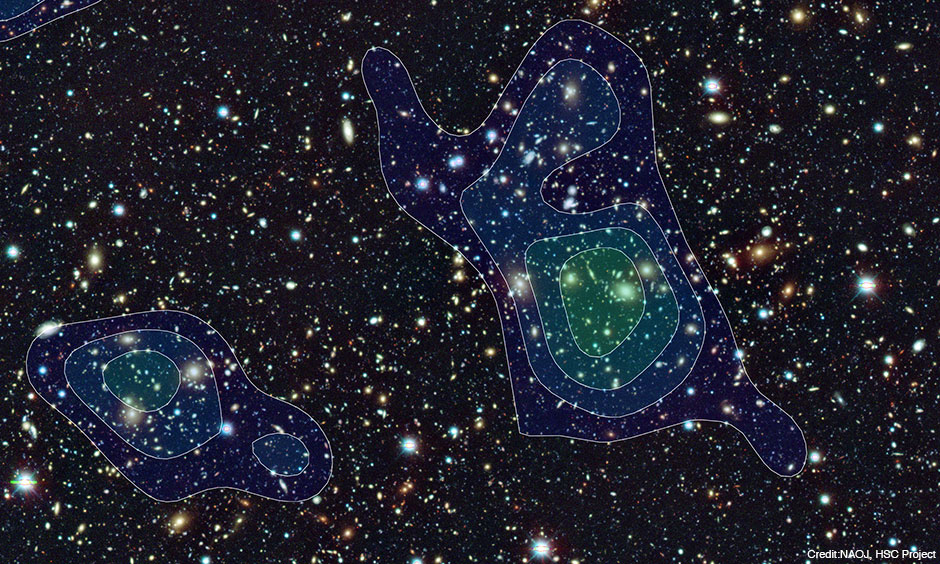Searching for “What is Essential” with the Subaru Telescope
Astrophotography・

This is an image (14 arc min × 8.5 arc min) taken in the direction of the constellation Cancer with Hyper Suprime-Cam (HSC) mounted on the Subaru Telescope. Contour lines indicate the distribution of dark matter, estimated from analysis of the image.
Investigating the Distribution of Unobservable Dark Matter from Observable Galaxies
“What is essential is invisible to the eye,” said the little prince in the book titled “The Little Prince (Note 1).” Also in our Universe, there are many important and essential things that determine the structure and destiny of the Universe, even though we can’t see them. We don’t know what they actually are, so we tentatively call them “dark matter.” Dark matter is an essential thing, so we want to investigate its distribution. But how?
Since dark matter does not shine by itself, we cannot observe it directly. But the shapes of the background galaxies are distorted slightly, due to the gravitational lens effect caused by the dark matter’s mass. By examining the distortion patterns of the galaxies, we can examine the distribution of dark matter.
Utilizing the high resolution of the Subaru Telescope’s HSC, we are measuring the shapes of the distant galaxies, which are small and dim because they are located far away, with unprecedented accuracy. Using the data from observations carried out for 5 years starting from March 2014, we aim to create the largest dark matter distribution map in history. The distribution chart introduced here is only one 36-thousandth of the whole. Stay tuned for our future research!
Text by: Satoshi Miyazaki (Advanced Technology Center, NAOJ)
Translation by: Hiroko Tsuzuki and Ramsey Lundock (Public Relations Center, NAOJ)
(Note 1)“The Little Prince” is a famous novella written by a French writer, Antoine de Saint-Exupéry. Back
Image Data
| Telescope | The Subaru Telescope |
|---|---|
| Instrument | Hyper Suprime-Cam |
| Credit | National Astronomical Observatory of Japan and Hyper Suprime-Cam Project |